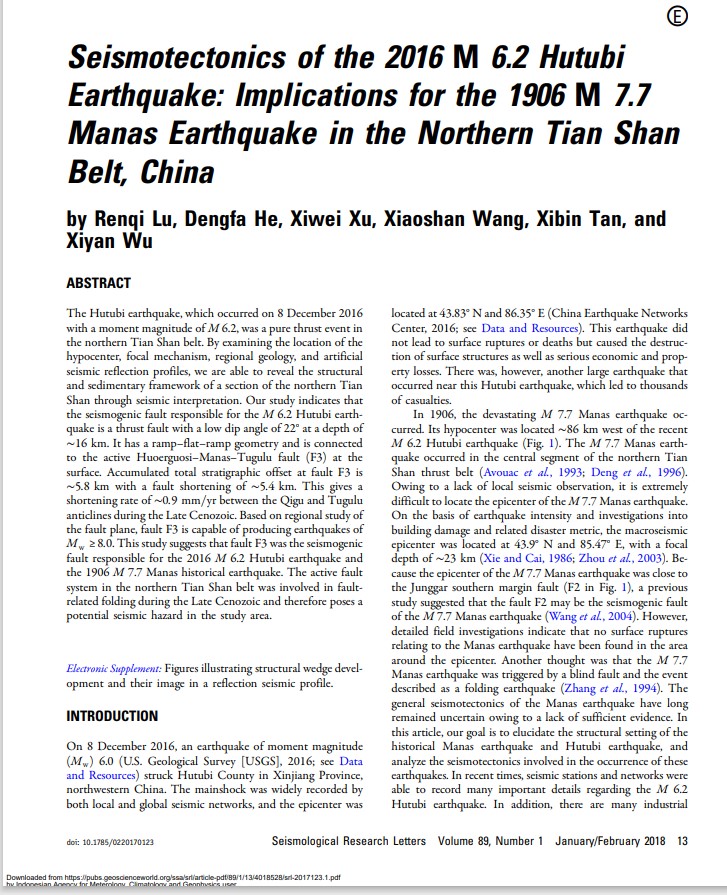The Hutubi earthquake, which occurred on 8 December 2016 with a moment magnitude of M 6.2, was a pure thrust event in the northern Tian Shan belt. By examining the location of the hypocenter, focal mechanism, regional geology, and artificial seismic reflection profiles, we are able to reveal the structural and sedimentary framework of a section of the northern Tian Shan through seismic interpretation. Our study indicates that the seismogenic fault responsible for the M 6.2 Hutubi earthquake is a thrust fault with a low dip angle of 22° at a depth of ∼16 km. It has a ramp–flat–ramp geometry and is connected to the active Huoerguosi–Manas–Tugulu fault (F3) at the surface. Accumulated total stratigraphic offset at fault F3 is ∼5:8 km with a fault shortening of ∼5:4 km. This gives a shortening rate of ∼0:9 mm=yr between the Qigu and Tugulu anticlines during the Late Cenozoic. Based on regional study of the fault plane, fault F3 is capable of producing earthquakes of Mw ≥8:0. This study suggests that fault F3 was the seismogenic fault responsible for the 2016 M 6.2 Hutubi earthquake and the 1906 M 7.7 Manas historical earthquake. The active fault system in the northern Tian Shan belt was involved in fault related folding during the Late Cenozoic and therefore poses a potential seismic hazard in the study area.
5
Seismotectonics of the 2016 M 6.2 Hutubi Earthquake: Implications for the 1906 M 7.7 Manas Earthquake in the Northern Tian Shan Belt, China
Renqi Lu, Dengfa He, Xiwei Xu, Xiaoshan Wang, Xibin Tan, and Xiyan Wu
Penerbit :
Seismological Research Letters
Tahun :
2018
epaper
-
No Scan-
-
No Klasifikasidoi: 10.1785/0220170123
-
ISBN-
-
ISSN-
-
No Registrasi-
-
Lokasi TerbitUSA
-
Jumlah Hal9
-
Label-
-
Versi DigitalTIDAK
-
Versi FisikTIDAK
-
Lokasi Rak Buku Fisik//
-
Jumlah Exemplar Fisik Tersedia-




